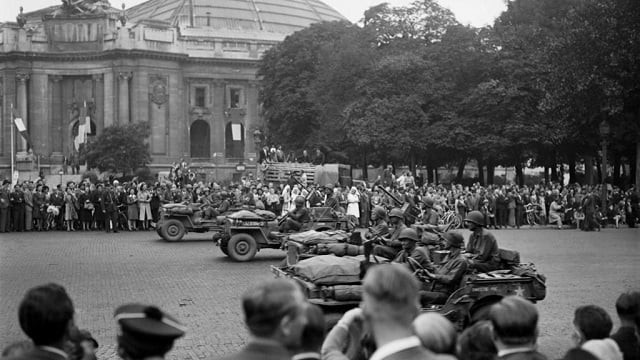World War II: Key dates
It was the world's deadliest conflict, estimated to have killed 40 to 60 million people

Hitler commits suicide on April 30. On May 8 Germany surrenders unconditionally, ending the war in Europe. PHOTO: AFP.
It was the world's deadliest conflict, estimated to have killed 40 to 60 million people, more than half of whom were civilians.
Here are key dates in the war.
Adolf Hitler's Nazi forces invade Poland from the west on September 1, 1939, prompting Britain and France to declare war on Berlin two days later.
'Majestic' WWII Spitfire set for round-the-world flight
Soviet forces attack Poland from the east on September 17, under a secret pact with Germany, and the city of Warsaw surrenders 10 days later.
After occupying Denmark and Norway, Hitler launches a major offensive against Belgium, The Netherlands, Luxembourg and France in May 1940.
France's wartime leader Philippe Petain on June 17 announces its capitulation; on June 22 he signs the armistice that allows Nazi forces to occupy the north of the country.
On June 18 French General Charles de Gaulle calls from London for resistance.
Petain sets up a government headquartered in the central spa town of Vichy that collaborates with the occupying German forces.
On August 13, 1940, the Battle of Britain begins with German bombers carrying out massive attacks on cities such as Coventry and London, the raids continuing for nine months.
Faced with British resistance, Hitler abandons his planned invasion of Britain and declares, later in August, a blockade of the British Isles with his submarine fleet.
On June 22, 1941, Berlin turns east and launches an attack against the Soviet Union.
The German army is halted at the gates of Moscow in December by a Soviet counteroffensive. However, its siege of Leningrad, now Saint Petersburg, will last nearly 900 days until January 1944.
On December 7, 1941, Japan -- allied with Germany -- attacks the US military base in Pearl Harbor, Hawaii, destroying most of the US Pacific fleet.
The Americans, led by Franklin D. Roosevelt, enter World War II the next day.
On January 20, 1942, Hitler ramps up at a Berlin conference his "Final Solution" plan to exterminate Jews, in particular by mass killings in concentration camps.
Some six million Jews are slain, as well as many political prisoners, including resistance fighters, homosexuals and gypsies.
In October 1942 British troops defeat the German Afrika Korps in Egypt, handing the Nazi army its first major setback.
In November thousands of British and American forces land in North Africa, leading to the surrender in 1943 of German-allied troops in the region.
On February 2, 1943, the five-month Battle of Stalingrad ends with Soviet victory over the Nazis.
It is the first Nazi surrender in Europe since the war began, and costs the German army half a million men.
In November 1943 the Allies agree to attack Germany via occupied France.
D-Day is on June 6, 1944, when more than 156,000 mainly American, British and Canadian troops land on the Normandy beaches. They overwhelm the Germans and liberate Paris on August 25.
The Soviet army arrives in Berlin in April 1945 and captures the city by early May.
Risk of nuclear war now highest since WW2, UN arms research chief says
Hitler commits suicide on April 30. On May 8 Germany surrenders unconditionally, ending the war in Europe.
On August 6 and 9 US aircraft drop atomic bombs on the Japanese cities of Hiroshima and Nagasaki respectively.
On September 2, 1945, Japan officially surrenders. World War II is over.


















COMMENTS
Comments are moderated and generally will be posted if they are on-topic and not abusive.
For more information, please see our Comments FAQ